Exploring the Accuracy of Tarot Card Readings
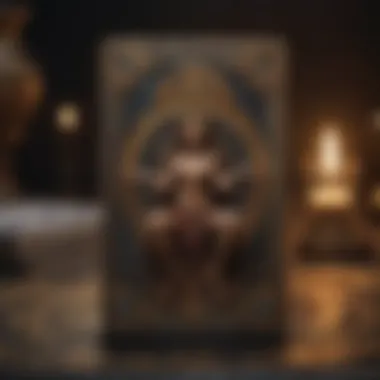
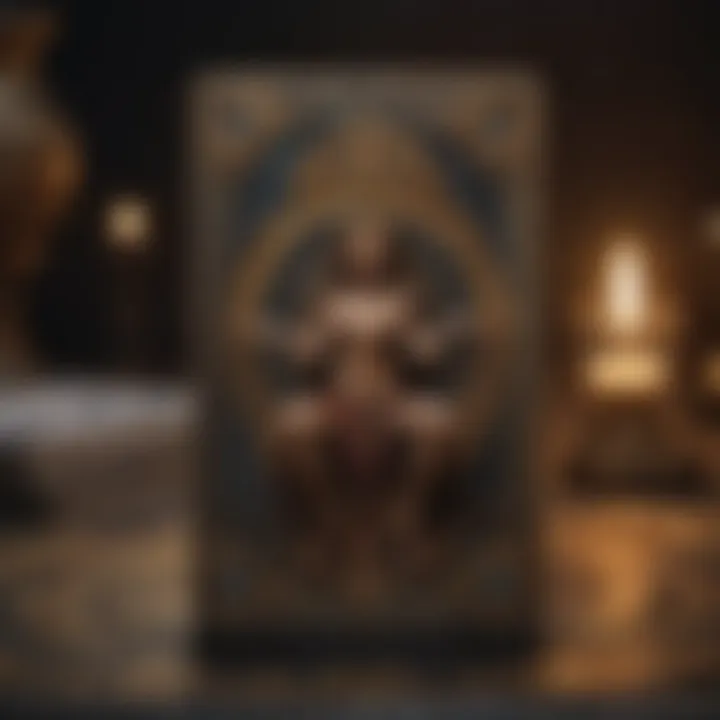
Intro
Tarot card reading sits at the intersection of art, intuition, and psychology, often stirring strong emotions and debate among those who engage with it and those who sit on the sidelines. As an ancient practice, its appeal transcends mere curiosity, inviting participants into a mystical world where perception frequently intertwines with reality. Yet one must wonder: just how accurate are these readings? The accuracy is not simply a matter of the cards themselves, but largely hinges on the reader's skill, the beliefs of the seeker, and the context in which these readings take place.
The following sections aim to dismantle the layers surrounding the perceptions and realities of tarot reading accuracy. We will delve into various interpretive frameworks, analyze psychological implications, and examine social and cultural influences. Through these explorations, we hope to cultivate a deeper appreciation for tarot readings as both a reflective art and a part of the broader human experience.
Zodiac Profiles
Overview of Each Sign
Each zodiac sign carries its unique flavor in the cosmic symphony, influencing individuals in profound ways. By understanding these profiles, one can glean insights that not only enrich tarot readings but also inform personal interactions.
- Aries: The fiery trailblazer.
- Taurus: The steadfast cultivator.
- Gemini: The curious communicator.
- Cancer: The nurturing protector.
- Leo: The confident leader.
- Virgo: The meticulous organizer.
- Libra: The harmonious diplomat.
- Scorpio: The intense transformer.
- Sagittarius: The adventurous philosopher.
- Capricorn: The determined builder.
- Aquarius: The innovative rebel.
- Pisces: The empathetic dreamer.
Personality Traits
Each sign reflects different personality facets, providing valuable context during tarot readings. These traits can help unravel not just what the cards suggest but why they resonate:
- Aries: Impulsive, passionate, competitive.
- Taurus: Loyal, patient, indulgent.
- Gemini: Adaptable, quick-witted, dual-natured.
- Cancer: Intuitive, sentimental, protective.
- Leo: Charismatic, confident, generous.
- Virgo: Analytical, practical, prudent.
- Libra: Charmingly indecisive, fair-minded, idealistic.
- Scorpio: Mysterious, strategic, resourceful.
- Sagittarius: Open-minded, freedom-loving, optimistic.
- Capricorn: Ambitious, disciplined, wise.
- Aquarius: Visionary, independent, unconventional.
- Pisces: Emotional, artistic, elusive.
Strengths and Weaknesses
Understanding strengths and weaknesses in the context of a tarot reading can amplify the insights gained:
- Aries: Strength in leadership, weakness in impulsivity.
- Taurus: Strong in reliability, weak in stubbornness.
- Gemini: Quick in thought, weak in consistency.
- Cancer: Strongly intuitive, weak at letting go.
- Leo: Strongly influential, weak in attention need.
- Virgo: Strongly analytical, weak in overthinking.
- Libra: Strong in balance, weak in indecision.
- Scorpio: Strongly transforming, weak in possessiveness.
- Sagittarius: Strongly adventurous, weak in restlessness.
- Capricorn: Strong in resilience, weak in flexibly.
- Aquarius: Strong in originality, weak in connection.
- Pisces: Strong in compassion, weak in escapism.
- Understanding these fundamental traits provides a lens through which personal tarot readings can be more accurately interpreted, reflecting the querent's nature and guiding the conversation in a deeper direction.
Exploring compatibility insights next highlights how these personality traits interact across relationships, whether romantic, platonic, or professional, setting the stage for a comprehensive understanding of interpersonal dynamics rooted in astrology.
Understanding Tarot Card Reading
Tarot card reading serves as a bridge between ancient wisdom and contemporary introspection. As a growing number of individuals lean towards holistic approaches for guidance, understanding the nuances of tarot becomes more crucial. Aside from its ostensible mystique, the practice offers insights into our emotions, choices, and paths. The question arises: why is grasping the essence of tarot reading so important?
First, it is vital to appreciate the rich tapestry of history encasing tarot cards. With roots extending back to the 15th century, tarot evolved from mere playing cards to tools for divination and self-reflection. This historical context not only enriches the practice but also helps practitioners understand the layers of meaning behind each card.
Secondly, fostering a comprehension of the structural aspects of a tarot deck enhances both the reader's and the querent's experiences. Knowing the roles of various cards—ranging from the Major Arcana to the Minor Arcana—can significantly influence the direction of the reading. Furthermore, different types of tarot decks and the unique artwork they feature can invoke varied emotional responses, thus shaping interpretations.
Finally, understanding tarot reading also delves into collective and individual perceptions. This encompasses how society views the practice and collectively assigns meaning to the cards. Is it a spiritual journey, or a mere parlor trick? Navigating this dichotomy may unearth biases that color personal readings.
In essence, understanding tarot reading is not just about the cards themselves; it's about engaging with a rich narrative, embracing the emotional and cultural reservoirs they tap into, and uncovering the deeper meanings hidden within each spread.
Perceptions of Accuracy in Tarot
The conversation surrounding the accuracy of tarot readings is akin to wading through murky waters; it’s often clouded by skepticism, belief, and individual interpretation. It’s essential to recognize that perceptions of tarot accuracy intertwine with cultural beliefs, personal experiences, and the skill of the reader. Understanding these perceptions offers a comprehensive look at how tarot functions not just as a spiritual tool, but also as a lens through which many view their lives. Acknowledging the nuances in this perception can illuminate both the potential benefits and glaring misconceptions that surround tarot card reading today.
Cultural Perspectives on Tarot
Cultural contexts significantly influence how tarot is perceived. In some traditions, tarot is respected as a legitimate means of gaining insight, while in others it may face outright dismissal as mere superstition. In Western cultures, tarot has often been linked with mystical practices and occultism. Contrarily, in some Eastern traditions, divination methods can lean towards fortune-telling yet maintain a harmonious relationship with spiritual enlightenment.
- Variety in Acceptance: In countries like France, tarot enjoys a certain glamour and allure, often being integrated into artistic expressions. In places such as the United States, however, it's often viewed through the lens of kitsch or novelty.
- Spiritual Integration: Cultural integration of tarot into broader spiritual practices, such as Wicca or New Age movements, indicates a growing acceptance of tarot as a tool for introspection.
Differences in Interpretation
Interpretation of tarot cards varies widely not only among different readers but also within the same reading depending on the situation and the seeker’s energy. Each card can have multiple meanings influenced by the context, the specific spread used, and the reader’s intuition.
- Personal Lens: A reader's personal experiences, belief systems, and even emotional states can color their interpretations.
- Symbolic Variations: For instance, The Fool can symbolize new beginnings for one person while representing recklessness for another, depending heavily on both the mood of the reading and the query posed.
This subjective lens raises a crucial question: If accuracy is perceived through such varying interpretations, can there truly be a standard for what makes a tarot reading accurate?
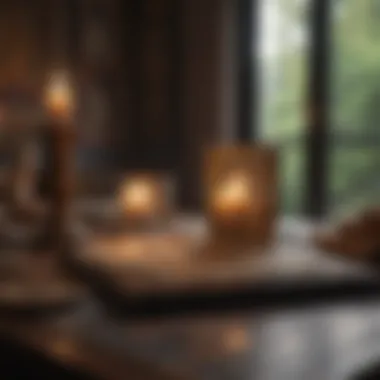

The Role of the Reader
The tarot reader's influence plays a pivotal role in the perceived accuracy of a reading. A skilled reader often acts as a conduit, interpreting not just the cards but also tapping into the emotional energy of the querent. This takes the interaction beyond just the superficial layers of card meanings and delves into deeper emotional territories.
- Experiential Knowledge: Great readers often possess an accumulated wisdom from years of practice that allows them to read the energy of the situation accurately, translating intuitive feelings into meaningful messages.
- Interpersonal Dynamics: The rapport established between the reader and the querent can greatly influence how the reading is received and understood. A trusting relationship often leads to a deeper exploration of the cards, fostering an environment where accuracy flourishes.
“The reader is not just an interpreter of the cards; they are an emotionally tuned vessel, reflecting the innermost thoughts and feelings of their seeker.”
Understanding these layers within tarot readings allows for a better grasp on how personal beliefs and cultural context can affect perceptions of accuracy. It becomes clear that tarot reading is not a mere fortune-telling exercise but a complex interplay of influences and interactions that navigate through psychological and emotional landscapes.
Cognitive Biases Influencing Readings
When it comes to tarot reading, cognitive biases play a pivotal role in shaping the accuracy and interpretation of the cards. These biases, often subconscious, can heavily influence both the reader and the querent (the person receiving the reading). Understanding these phenomena is essential for grasping how tarot can be both a tool for insight and a reflection of our own inner workings.
Confirmation Bias
Confirmation bias refers to the tendency to favor information that confirms our existing beliefs while ignoring anything that contradicts them. In tarot readings, this manifests in two ways. First, the querent might only focus on those aspects of the reading that resonate with their preconceptions or desires, dismissing the parts that don't align. For instance, if someone hopes to hear good news about a career change, they may selectively focus on the positive implications of certain cards like the Sun or Ace of Pentacles, while downplaying or rationalizing any negative cards related to challenges.
On the other hand, the tarot reader may also exhibit confirmation bias, interpreting the cards in a way that fits their worldview or previous experiences. This can limit the scope of the reading, rendering specific interpretations more subjective than objective. Evaluating this bias is crucial for improving the accuracy and relevance of readings.
The Barnum Effect
The Barnum Effect, another cognitive phenomenon, explains why vague statements are often perceived as highly accurate when they apply to a broad audience. In tarot, many readings contain generalized attributes that individuals perceive as personal truths. For example, phrases like "you sometimes feel insecure, yet you can be quite confident" could resonate with almost anyone.
When a tarot reader presents such wide-ranging insights, querents may attribute deep meaning to them because they feel the reading speaks directly to their life. This effect makes tarot readings seem more accurate, even when they are based on generalities. Understanding this can help both readers and clients approach readings with a critical mindset, ensuring interpretations are not merely a product of the listener’s expectations.
Emotional Influence on Perception
Emotions significantly shape our perceptions, and in the context of tarot reading, this is a double-edged sword. When a querent sits down for a reading in a heightened emotional state—be it anxiety, hope, or despair—these feelings can color how they interpret the cards. For example, if a querent is feeling particularly vulnerable, they may interpret a card like the Five of Cups, which often indicates loss, in an exaggeratedly negative light, ignoring any potential for recovery or learning embedded in the message.
Similarly, readers can be swayed by their own emotional states, which may lead them to project their feelings onto the interpretaion. A reader in a particularly optimistic mood might emphasize the positive potential of a reading, while a more cynical reader may dwell on the negative aspects, regardless of the cards drawn.
"The emotional lens through which readings are interpreted can alter the perceived accuracy of the message, shaping it into something that aligns more closely with the reader's or querent's existing emotional landscape."
Understanding these emotional influences can enrich the tarot experience, allowing both the reader and querent to disentangle the cards’ messages from their personal feelings. This awareness can lead to more nuanced interpretations and healthier discussions of the insights gained from the readings.
By recognizing how these cognitive biases function within tarot readings, participants can enhance their experiences. Whether you approach tarot as a psychological tool or a spiritual practice, being aware of these biases helps in navigating the complex interplay between perception and reality.
The Role of Belief Systems
In the realm of tarot card reading, belief systems stand as a cornerstone. They greatly shape how individuals perceive accuracy and narrative tied to the practice. Whether one approaches tarot with skepticism, reverence, or casual curiosity, these beliefs influence everything from the interpretation of cards to the emotional responses elicited during a reading. Understanding this relationship is essential for untangling the intricate web of perceptions surrounding tarot.
Beliefs not only affect individuals' understanding but also their experience of the readings. For instance, someone who holds a fixed belief about their fate may view any prediction through a disillusioned lens, creating a rigid barrier to potentially enlightening insights. In contrast, a more open-minded individual might embrace unexpected revelations. This aligns with the broader psychological understanding—when belief systems intertwine with mystical practices such as tarot, they can augment or limit one’s interpretive lens.
Personal Beliefs and Tarot Accuracy
The convergence of personal beliefs and tarot accuracy is quite fascinating. Personal belief systems are deeply rooted in the values, experiences, and cultural narratives individuals carry.
Such beliefs can act as a double-edged sword. On one hand, individuals who strongly believe in the credibility of tarot might find themselves experiencing profound epiphanies. Their unwavering faith can create a fertile ground for insights to blossom. Conversely, those anchored in cynicism may dismiss valuable messages that could propel them towards growth. The nuance here lies in the notion that personal belief can transform reading accuracy into a subjective experience rather than an objective measure.
"What we believe shapes our reality; it dictates how we navigate the world and interpret the signs we encounter."
Self-Fulfilling Prophecy in Readings
The concept of self-fulfilling prophecy interweaves closely with personal beliefs. Essentially, when individuals approach a tarot reading with specific expectations or beliefs, they may unconsciously influence the outcome of that reading. If a person believes that a certain card signifies failure, they might read every omen thereafter as confirmation of their belief. This psychological process renders that person a participant in their own narrative, where belief preordains reality.
This is particularly notable in tarot, as the interpretative aspect enables individuals to reflect their internal conditions onto the readings. The stronger the belief in a predicted event, the more likely one is to act in ways that align with that expectation, hence fulfilling the prophecy—intentionally or not.
Placebo Effect and Tarot
Similar to the well-known placebo effect in medicine, which posits that belief in a treatment can lead to actual improvements in health, the belief in tarot's effectiveness can induce genuine shifts in an individual's life. Here, the power of suggestion plays a pivotal role. When clients approach tarot readings with optimism and belief, they may find themselves inspired to make life changes based on insights gleaned from the cards.
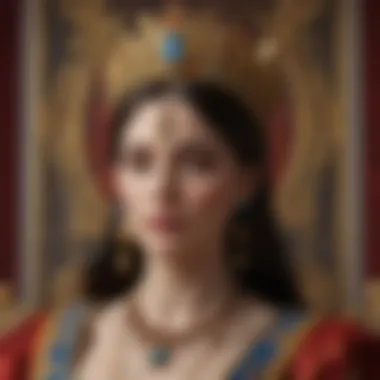

These changes—even when driven by mere belief—can manifest in tangible ways, resulting in improved mental wellbeing or augmenting one’s sense of agency in their life situation. In this context, tarot acts not merely as a foretelling tool but as a catalyst for personal transformation driven by deeply ingrained belief systems.
In summary, the role of belief systems in tarot reading underscores the intricate interplay between perception and reality. Each individual's unique belief landscape frames their experience and understanding of tarot, making it a deeply personal yet universally resonant practice. The nuanced relationship between beliefs, tarot readings, and perceived accuracy opens a dialogue not only about the cards but also about the myriad ways human beings interpret their existence.
Social and Cultural Influences
Examining tarot reading within social and cultural contexts is crucial to understanding its perceived accuracy. These influences shape both how tarot is viewed in society and the ways individuals interact with and interpret tarot readings. By diving into this exploration, we unveil layers of meaning that enhance our grasp of tarot as a reflective practice, rather than merely a mystical art.
Mainstream Acceptance of Tarot
Tarot's journey into mainstream acceptance marks a significant shift in perceptions over the years. Once seen primarily as a tool for the occult or linked to superstition, tarot has emerged from the shadows into broader cultural awareness. This transition can be traced back to various societal changes—namely an increasing interest in personal empowerment and self-discovery.
In many corners of the world, tarot has been adopted not just as a spiritual guide, but also as a tool for psychological insight. For instance, wellness communities and holistic practitioners often incorporate tarot into therapeutic settings, emphasizing its utility rather than its mystical affiliations. This adaptation has fostered a more favorable view of tarot, now being recognized as an instrument for reflection rather than mere fortune-telling.
A striking example exists in modern cities, where tarot pop-ups have gained traction during community festivals or local markets. These events speak to a burgeoning curiosity among the general public, showcasing tarot readings as an acceptable form of seeking guidance. Ultimately, this mainstream acceptance contributes to the narrative surrounding tarot accuracy, making it a shared experience—one that transcends individual belief systems.
The Impact of Social Media
The advent of social media has undoubtedly reshaped how tarot is perceived and practiced. Platforms like Instagram and TikTok have given rise to a new generation of tarot enthusiasts who use hashtags and visual storytelling to share their experiences. The nature of engagement on these platforms allows for a collective discourse around tarot reading, fostering a sense of community among practitioners and seekers alike.
Through short videos and eye-catching images, readers can illustrate interpretations that might resonate with a wider audience, thus expanding the art form itself. Social media has made tarot more accessible, providing users the ability to connect with tarot readers from diverse backgrounds. The result is a melting pot of interpretations and styles, paying homage to local customs while also incorporating global perspectives.
However, this phenomenon also carries a downside. The brevity of content on social media can lead to overs simplifications of tarot's more nuanced aspects. A single post may not capture the depth of a reading but rather focuses on surface-level insights. As a consequence, some users may develop misconceptions about tarot's accuracy based on these limited depictions.
Social media acts as both a bridge and a barrier in the tarot community, providing access and sometimes leading to misconceptions.
Tarot in Contemporary Spiritual Practices
In today’s fast-paced world, many individuals seek solace in spiritual practices that promote mindfulness, grounding, and introspection. Tarot, integrated into contemporary spiritual rituals, serves as a medium through which users can discover or reinforce their sense of self. From simple guidance in meditative spaces to comprehensive workshops combining tarot with mindfulness exercises, its role is expanding.
For many, tarot readings have become a ritual—a way to pause and reflect on life’s challenges. In this context, the accuracy of readings may stem more from the personal relationships built between the reader and seeker, as opposed to the cards themselves. Elements like trust, empathy, and understanding tend to enhance the perceived accuracy of the reading.
Moreover, tarot is becoming increasingly integrated into personal development realms, often linked with practices such as yoga and meditation. By framing tarot within these holistic approaches, practitioners not only enhance their own understanding of the cards but also merge tarot’s accuracy with other mind-body techniques. This multifaceted interaction nurtures a more profound appreciation for tarot as a psychological and emotional exploration, rather than a straightforward predictive tool.
Through engaging with these social and cultural influences, we can see that the practice of tarot is far from static. Instead, it is constantly morphing, shaped profoundly by the values and perceptions of contemporary society. As more individuals embrace tarot in various forms, it prompts a collective reckoning with what accuracy means in this ever-evolving landscape.
The Intuitive Nature of Tarot Reading
The intuitive aspect of tarot card reading plays a vital role in shaping how individuals perceive their readings and how they integrate these insights into their lives. Unlike conventional divination methods that may rely heavily on fixed interpretations and structured approaches, tarot offers a flexible framework that encourages personal insight. This section explores key elements of intuitive reading, highlights its benefits, and considers the broader implications of intuition in the context of tarot interpretations.
Intuition vs. Rationality in Readings
When discussing tarot, the interplay between intuition and rationality cannot be overlooked. Intuition, often seen as a gut feeling or an instinctual understanding, allows a reader to feel beyond just the surface of the cards. This contrasts sharply with a rational approach, which often depends on logical deductions and set meanings associated with each card. While rational thought can aid in grounding a reading, bringing clarity to symbols, relying solely on logic may restrict the depth of the insights provided.
Intuitive readers often describe their process as almost a dance with the cards; it’s a delicate blending of instinct and knowledge. A card, for instance, may represent specific meanings in one context, but its resonance changes based on the reader’s feelings and the circumstances surrounding the querent. This nuanced understanding highlights the limitations of a fixed approach and illustrates how intuition enhances the reading experience, allowing for a more dynamic engagement with the cards.
Developing Intuitive Skills
Strengthening one's intuitive skills is not just the realm of the naturally gifted; it’s a skill that can be cultivated over time. Many tarot practitioners emphasize the importance of practice, mindfulness, and engagement with the self to develop these skills. Some effective methods include:
- Journaling: Keeping a tarot journal can help track insights, emotions, and intuitive flashes during readings. Documenting these experiences can reveal patterns over time.
- Meditation: Regular meditation fosters a greater connection to one’s inner voice, helping to quiet distractions and promote clarity.
- Trusting your instincts: Often, intuition manifests as a fleeting thought or feeling. The more one learns to trust these impulses, the clearer the intuitive insights become.
Developing these skills takes both time and patience, but inevitably leads to a more rewarding tarot practice. The result enhances one's ability to interpret cards in a personal and meaningful way, providing deeper insights for both the reader and the querent.
Art vs. Science in Tarot Interpretation
When considering tarot interpretation, the debate of art versus science naturally arises. Some argue that tarot is based on psychological principles, with interpretations following a scientific method of understanding human behavior and emotions. Others hold the belief that tarot is more of an artistic endeavor, steeped in symbolism, creativity, and personal expression.
In reality, tarot is a confluence of both the art and science. The science aspect lies in the psychological frameworks that inform how one interprets messages. Understanding human behavior, emotional responses, and cognitive biases can help a reader discern the psychological elements at play in a querent's situation. On the other hand, the artistic side allows for individual expression, imagination, and an interpretation that resonates on a personal level.
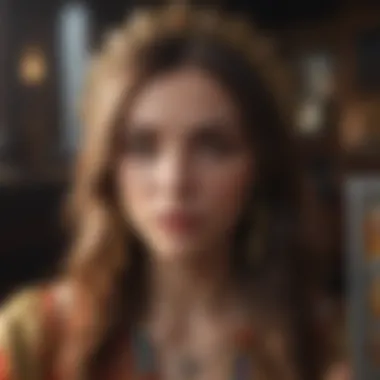
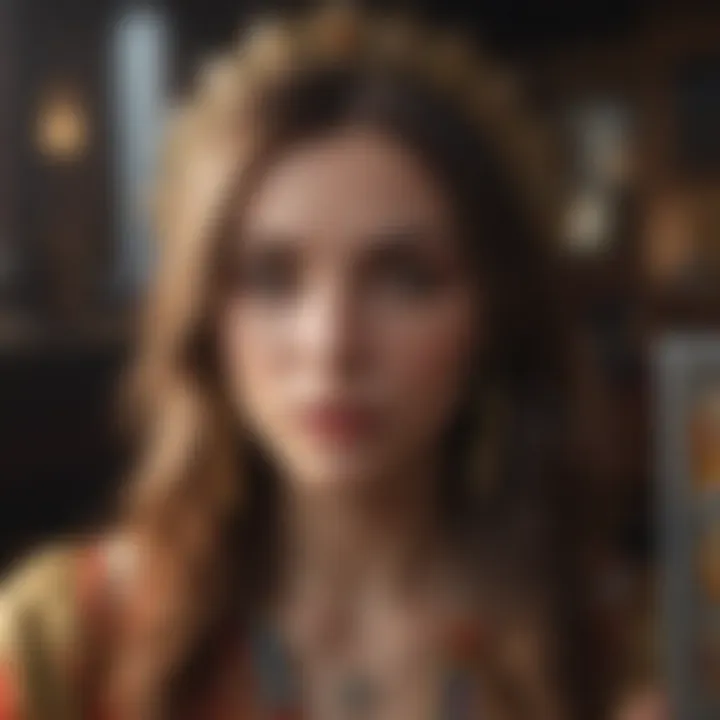
As readers navigate through cards, they rely on their training, experience, and intuitive insights – a blend that makes tarot equally a predictable and unpredictable art form. Embracing both elements heightens the accuracy and richness of the readings, providing a multi-faceted lens through which individuals can explore their lives and decisions.
The path to accurate tarot reading lies not only in the symbols on the cards but also envelops the intuitive feelings that arise within the reader.
Through exploring the intuitive nature of tarot, we are able to appreciate how this practice extends beyond merely predicting the future; it becomes a reflective journey that influences personal growth and self-awareness.
Psychological Insights from Tarot Reading
In examining tarot card reading, its psychological implications come to the forefront, shedding light on not just the act of reading cards but also on the deeper emotional and cognitive processes at play. Understanding these psychological insights allows for a more refined take on the perceived accuracy of readings, highlighting why many individuals feel a profound connection to tarot. It's worth noting that the psychological aspects are often intertwined with personal beliefs and cultural contexts, making this topic both intricate and fascinating.
Tarot as a Reflective Tool
Tarot cards serve as more than just divination tools; they act as mirrors to the soul. Each card can reflect not only the present circumstances of an individual but also bring to light hidden concerns and subconscious thoughts. For instance, when the Tower card appears in a reading, it isn't merely predicting upheaval; it often prompts reflection on where one might already feel instability in their lives. This reflective quality can facilitate a deeper understanding of oneself. Recent studies suggest that engaging with tarot might help individuals articulate feelings and thoughts they may struggle to express otherwise, allowing for personal exploration and growth.
"Tarot acts as a bridge, facilitating conversations with parts of the self that often remain hidden beneath the surface."
Potential Therapeutic Benefits
The therapeutic implications of tarot reading are gaining recognition in various holistic practices. While some might view tarot with skepticism, numerous practitioners highlight its benefit in fostering mindfulness and emotional regulation. For example, tarot can assist individuals in grounding themselves during times of stress or confusion, providing not only clarity but also avenues for coping. The simple act of pulling cards can create a pause — a moment for reflection and breathing — thus enhancing an individual's mental well-being.
In therapy settings, integrating tarot can also normalize discussions around feelings that are difficult to navigate. Instead of merely focusing on issues, the cards can invite clients to discuss various imagery and meanings associated with their choices, leading to profound insights about their emotional states and reactions.
Addressing Life Challenges through Tarot
Life often throws curveballs that can lead to confusion or a feeling of being lost. Here’s where tarot shines as a valuable tool in navigating these challenges. Whether it’s relationships, career paths, or self-identity, tarot can help frame questions that focus on the heart of the matter. For example, someone confronting a career dilemma might draw cards that evoke different aspects of their work life. Instead of presenting clear-cut answers, tarot invites reflection through symbolism.
Additionally, a tarot reading can empower individuals by encouraging them to take some form of proactive step towards a solution. This proactive approach, coupled with the reflective nature of readings, often leads people to gain a sense of agency over their situations, no matter how daunting they might appear initially. It opens up a space for contemplation and creative thinking, allowing new perspectives to surface that might otherwise remain unaddressed.
By simplifying complex emotions and conflicts into visual narratives, tarot helps individuals confront issues step by step, often leading to healthier coping strategies.
Understanding the psychological insights derived from tarot readings reveals a more interconnected view of the role it plays in personal introspection and societal interactions. As practitioners and enthusiasts alike dive deeper, the discourse around tarot continues to evolve, blending traditional mysticism with modern psychological understanding.
Culminations on Accuracy and Interpretations
In the realm of tarot card reading, the pursuit of understanding accuracy intertwines with a myriad of perceptions and realities that both practitioners and seekers grapple with. This section aims to distill the essence of what accuracy in tarot really means, shedding light on its importance in enhancing the practice and experience of tarot for both readers and those who seek guidance.
When we talk about conclusions in accuracy and interpretations, we are not merely discussing whether a reading was ‘right’ or ‘wrong,’ but encapsulating how these readings can inform one’s life trajectory. One significant aspect is that interpretations can serve not only as reflections of the immediate but as windows into possible paths ahead. Thus, a nuanced understanding of accuracy enables individuals to approach tarot not as a deterministic fate but rather as a flexible tool to navigate complexities.
Synthesizing the Findings
In synthesizing the findings throughout this article, it is pivotal to recognize how diverse factors—be it cognitive biases or psychological influences—contribute to the reader’s perception of the accuracy of tarot reading. One striking conclusion arises: the reader's mindset can skew interpretations significantly.
Key Elements:
- Cognitive Dissonance: Readers might cling to certain card meanings that align with their thoughts and emotions while dismissing those that contradict their beliefs.
- Role of Context: Each reading takes place within a specific context that must be considered. The cards drawn are influenced by the questions asked and current circumstances, which can drastically affect clarity.
- Feedback Loops: When people feel affirmed through tarot (or any divinatory method), they are more likely to perceive future readings as accurate, establishing a reinforcing cycle of belief.
Through careful reflection, it is clear that while readings possess an inherent unpredictability, they also offer insights that can shape how one perceives their journey forward.
Subjective Nature of Accuracy
Diving deeper into the subjective nature of accuracy, we begin to understand that what resonates for one individual may not hold the same truth for another. This subjects the validity of each reading to personal interpretation, meaning that accuracy is often a moving target shaped by contextual factors, emotional states, and individual life situations.
The subjective nature of tarot encourages practitioners to embrace its fluidity. This notion instigates discussions around whether accuracy can be quantified in tarot readings. For example:
- Shared Insights: A reading could resonate with multiple individuals experiencing similar challenges, showcasing how common themes can emerge across different contexts.
- Personal Resonance: Each card holds different significance for each seeker; what rings true for an individual can contribute to their understanding of accuracy.
- Evolving Narratives: Just as life unfolds, so too do interpretations—what seemed accurate yesterday may evolve, illustrating the transformative power of tarot.
In essence, accuracy becomes a dance between reader and seeker, colored by subjective experiences, challenges, and triumphs.
Future Directions in Research
As we stand on the precipice of ongoing exploration into tarot card reading, future research holds significant promise to deepen our understanding of its implications. Critical studies might address:
- Empirical Evidence: By integrating psychological assessments and longitudinal studies, future research can illuminate how tarot readings correlate with personal growth and decision-making.
- Cultural Contexts: Exploring how tarot is perceived across different cultures can enrich our understanding of its role in various belief systems and frameworks, allowing for a global discourse.
- Technological Integration: With technology shaping modern spirituality, examining how online tarot platforms influence perceptions of accuracy—especially in the age of social media—could yield important insights.
Ultimately, as much as tarot can serve as a tool for divination and guidance, it can also spotlight the deeper question of how our beliefs and experiences mold our perception of truth.



